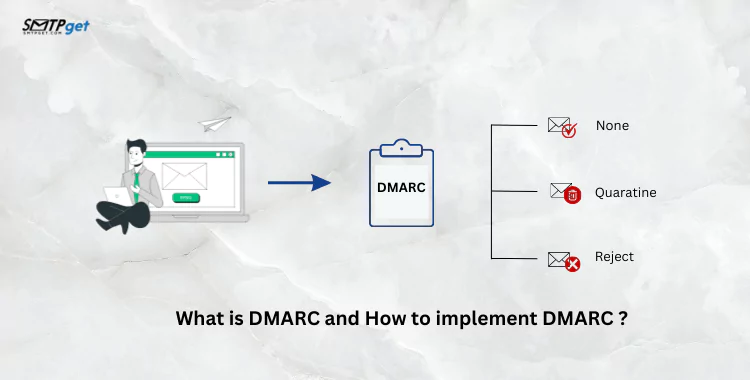Sending emails is a key part of any online system, especially for DevOps teams. Choosing between SMTP as a service and self-hosted SMTP can affect your project’s speed, cost, and control. SMTP as a service is a cloud SMTP option that takes care of everything for you, while self-hosted SMTP lets you manage your own email server infrastructure. If you’re setting up SMTP for DevOps, it’s important to understand the benefits and challenges of both choices.

Should you choose SMTP as a service or go with a self-hosted SMTP setup?
This blog dives deep into the pros and cons of SMTP as a service and self-hosted SMTP, with a specific focus on SMTP for DevOps needs. We’ll help you understand which approach aligns best with your performance, scalability, and security goals.
Our Pricing:
| Pricing | Cheapest Plan | Standard Plan | Professional Plan |
| SMTP Server Services | $110 | $165 | $220 |
| Bulk Email Server | $50 | $145 | $225 |
| Bulk Email Service | $30 | $110 | $220 |
What is SMTP as a service?
SMTP as a Service is a cloud-based solution that allows users to send emails without managing their own mail servers. SMTP (Simple Mail Transfer Protocol) is the standard protocol used to send emails over the internet. Traditionally, organizations had to set up and maintain their own SMTP servers, which involved complex configuration, server monitoring, and IP reputation management.
With SMTP as a Service, third-party providers handle all the technical aspects—such as server uptime, queue management, authentication, and email deliverability. Users simply connect to the service using provided SMTP credentials and start sending emails.
This service is ideal for businesses, developers, and marketers who want a reliable and scalable email-sending solution without dealing with backend infrastructure. Additional benefits include detailed analytics, email tracking, security features like SPF and DKIM, and better deliverability rates.
Popular SMTP as a service providers include:
- SMTPget
- iDealSMTP
- SendGrid
- DigitalAka
- Mailgun
- Amazon SES
These platforms offer robust cloud SMTP features like auto-scaling, real-time analytics, spam protection, and seamless integration with modern DevOps tools.
Key Features of SMTP as a service for DevOps:
- Fast integration with CI/CD pipelines
- API support for programmatic access
- High deliverability via optimized IP pools
- Global cloud SMTP infrastructure
- Security & compliance built-in
What is Self-Hosted SMTP?
A self-hosted SMTP server is an email system that you set up, configure, and manage on your own infrastructure. Unlike cloud-based SMTP services, a self-hosted setup gives you full control over how emails are sent, stored, and monitored. This approach is often used by businesses that require greater privacy, customization, or control over deliverability settings. This setup uses open-source tools like:
- Postfix
- Exim
- PowerMTA
- Haraka
Here, you’re responsible for every layer of the email server infrastructure from DNS records (SPF, DKIM, DMARC) to queue systems, IP rotation, and bounce handling. While this method offers flexibility and cost savings in the long term, it requires technical expertise, regular maintenance, and security monitoring.
Self-hosted SMTP is best suited for developers or organizations with in-house IT teams who want to tailor their email infrastructure to specific needs or regulatory requirements.
Why DevOps Teams Choose Self-Hosted SMTP:
- Full control over mail routing and delivery
- Ability to warm up dedicated IPs
- Greater visibility into logs and performance
- Lower costs for high-volume campaigns
SMTP as a service: Pros & Cons
SMTP as a Service offers a hassle-free way to send emails without managing your own server.
Let’s explore the key advantages and drawbacks to help you decide if it’s right for you.

Pros
- Quick Deployment: Set up in minutes with no server maintenance
- CI/CD Friendly: Seamless with tools like Jenkins and GitHub Actions
- High Deliverability: Professionally managed IP pools
- Global cloud SMTP architecture for failover and redundancy
Cons
- Vendor Lock-In: Dependent on provider’s policies and pricing
- Limited Customization: No control over mail headers or flow
- Content Filters: May block or alter emails unexpectedly
- Scaling Costs: Pricing grows with usage, less ideal for bulk senders
Self-Hosted SMTP: Pros & Cons
Self-hosted SMTP gives you full control over your email infrastructure.
But with control comes responsibility—let’s weigh the pros and cons.

Pros
- Full Customization: Tailor every part of your email server infrastructure
- IP Control: Manage your reputation with custom IP pools
- Cost-Effective: Better ROI for millions of monthly emails
- Freedom: No restrictions on content or format
Cons
- Complex Setup: Requires deep SMTP and DNS knowledge
- Maintenance Burden: You handle updates, security, and monitoring
- High Risk: Misconfiguration can lead to blacklisting
- Resource-Intensive: Needs dedicated DevOps support
Security & Compliance: DevOps Critical View
- SMTP as a service providers offer built-in TLS encryption, spam filtering, and compliance with standards like GDPR and CAN-SPAM. But visibility into logs may be limited.
- Self-hosted SMTP, while more complex, provides deeper access to logs and allows for complete implementation of SPF, DKIM, DMARC, and TLS policies. For DevOps, this can be both a benefit and a responsibility.
Performance & Scalability Comparison
- SMTP as a service excels in scalability. Its cloud SMTP setup lets you send millions of emails without performance hits.
- Self-hosted SMTP, on the other hand, gives you control over horizontal scaling. But this requires careful planning and monitoring, especially for DevOps teams focused on uptime and queue management.
Pro Tip: Many teams use a hybrid model-SMTP as a service for transactional messages, and self-hosted SMTP for bulk or promotional campaigns.
SMTP for DevOps: Automation & Infrastructure-as-Code
- SMTP as a service integrates easily with tools like Terraform, Ansible, Jenkins, and GitHub Actions. Most providers offer ready-to-use APIs and SDKs for easy automation.
- Self-hosted SMTP can be fully automated too-but with more complexity. Tools like Ansible or Puppet are essential, and custom scripts are often required to handle queue purging, monitoring, and failover.
Cost Comparison: SMTP as a service vs. Self-Hosted SMTP
| Feature | SMTP as a service | Self-Hosted SMTP |
| Setup Time | Minutes | Hours–Days |
| Cost (1M emails) | $100–$300/month | $50–$150/month |
| DevOps Maintenance | Low | High |
| Customization | Limited | Full Control |
Bottom line: For low to medium volume senders, SMTP as a service is efficient. But if you’re sending millions of emails monthly, self-hosted SMTP is more economical in the long run.
Use Case Scenarios: What Should You Choose?
- Startups / SaaS Teams: Go with SMTP as a service for speed and ease.
- Email Agencies: Choose self-hosted SMTP for deliverability control and cost-efficiency.
- Large Enterprises: Use both-SMTPaaS for critical emails and self-hosted SMTP for campaigns.
- Privacy-Focused Organizations: Opt for self-hosted SMTP to retain full data control.
Conclusion: DevOps Decision-Making Guide
From a DevOps perspective, both SMTP as a service and self-hosted SMTP have strong use cases. The right choice depends on your team’s expertise, performance needs, and budget.
- Want speed and simplicity? – Choose SMTP as a service
- Need control and long-term savings? – Go for self-hosted SMTP
- Want flexibility and scale? – Combine both for a hybrid approach
Need Help Choosing the Right SMTP Setup?
At SMTPget, we specialize in building powerful email server infrastructures tailored for your DevOps workflows – be it cloud SMTP or self-hosted SMTP.
👉 Contact us today to get started.








